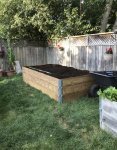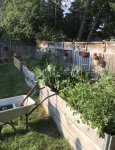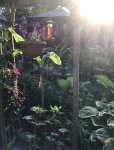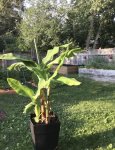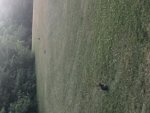As some may recall, we got rid of the Mulberry tree last year after the family of racoons were visiting it nightly. My wife was freaked out.
This year she didn't like the lack of privacy, so we added a birch, that will hopefully grow well and add some privacy and much needed shade.
Also added 3 black cedars on the opposite side of the yard. The cedars are doing well, but the birch has had some leaves turn yellow and fall off.
My buddy that planted them said to give it a good soak 3x per week.
How does it look to you guys?
Watering suggestions?
Every other tree we've ever planted survived on some watering for first couple of weeks and then rainfall.
This was planted ~two weeks ago.
(Pic was yesterday)
Sent from my Pixel 3a using Tapatalk


















